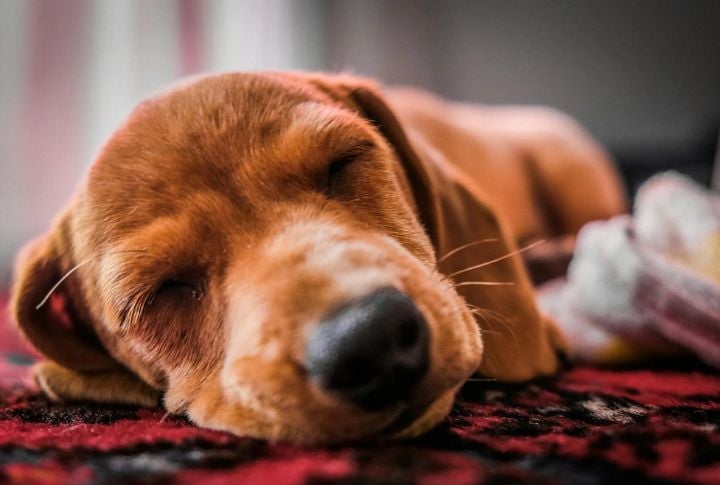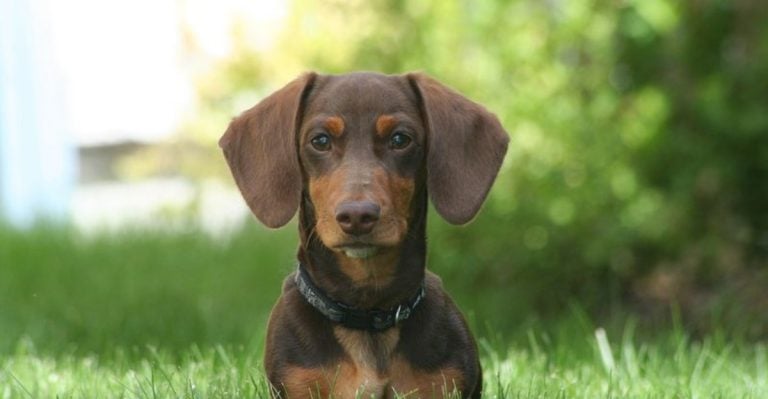15 Insights Into How Dogs Dream And What It Means

Behind every snoozing dog is a busy brain at work. Dreaming, processing, adapting—it all unfolds quietly during rest. Thanks to modern tools like EEGs and behavioral studies, scientists now understand much more. So, let’s unpack fifteen key discoveries that explain how dogs dream and why their sleep patterns are more meaningful than they seem.
Dogs Experience REM Sleep Like Humans Do

Research confirms that dogs enter REM sleep, the stage most associated with vivid dreaming. This phase typically begins about 20 minutes after they take a nap. During REM, their brains light up with activity that closely mimics being awake, with bursts of electrical signals firing across the cerebral cortex.
Puppies Dream More Frequently

Young puppies spend a greater portion of their sleep in REM, meaning they dream more often. Scientists believe this helps them process and store new experiences as they learn about the world. A newborn pup might have brief dreams every 10 minutes.
Senior Dogs Have Shorter, Less Active Dreams

As they age, their REM sleep phases tend to shorten, and dream activity may decrease. Older canines often wake more frequently and spend less time in deep naps. This change parallels age-related sleep patterns in humans and may reflect cognitive shifts, including memory processing or sensory decline.
Dreams Reflect Their Daily Activities

Canine dreams often mirror what they did while awake. A dog that spent the day playing fetch may “relive” the action. Even scent-related experiences might appear in dreams, as a dog’s olfactory system remains subtly engaged during sleep, possibly influencing their dream world.
Their Breed Affects Dream Duration

Larger dogs tend to have longer but less frequent dreams, while smaller breeds have shorter and more frequent dream cycles. A Toy Poodle may dream for less than a minute, but does so several times a night. In contrast, a Saint Bernard might have fewer episodes lasting several minutes each.
Dogs May Dream Of Their Owners

Experts theorize that pups, like humans, dream about emotionally significant individuals, often their owners. Given their strong bond and dependence, it’s likely that familiar voices, scents, and routines appear in canine dreams. Brain scans have shown similar activity patterns to humans when canines are exposed to their owners’ scents.
Sleep Twitching Isn’t Random

Movements during sleep—like paw flicks or ear twitches—often align with what the dog is dreaming. These involuntary actions occur during REM when motor neurons are partially suppressed but not entirely blocked. Scientists believe this partial inhibition allows dogs to act out parts of their dreams without fully waking up.
Dogs Have Sleep Cycles Similar To Ours

A full nap cycle includes light sleep, deep sleep, and REM, just like in humans. However, they complete a full cycle in about 20 minutes, compared to our 90-minute cycles. That’s why they tend to nap more often and appear to fall into dream states more quickly.
Not All Noises During Sleep Are Dreams

Whining or growling during sleep can indicate dreaming, but not always. These sounds might also stem from involuntary muscle reactions or brief arousals from deep sleep. To distinguish dreaming, look for paired signs like irregular breathing, limb movement, or rapid eye motion under closed eyelids.
Sleep Position Influences Dream Activity

Dogs who sprawl on their side or curl up loosely are more likely to reach deeper sleep stages, including REM. Positions allowing full muscle relaxation make it easier for dreams to occur. Conversely, those who sleep tightly curled or upright often remain in lighter sleep and dream less.
Some Dogs Experience Nightmares

Just as pups can dream of pleasant experiences, they may also suffer through nightmares. If a dog suddenly wakes panting or trembling, it could be reacting to a frightening dream. Rescue canines or those with traumatic pasts tend to show higher incidences of these disturbed sleep episodes.
Sleep-Deprived Dogs Dream More Intensely

When canines miss out on sleep, they often compensate with longer and more intense REM phases later—a phenomenon known as REM rebound. This means dreams may become more vivid or frequent. A dog kept awake by stress or disruption might also show increased twitching or vocalization during its next full rest.
Dogs With Brain Injuries May Stop Dreaming

Neurological damage can affect dreaming, especially to the pons, a brainstem region regulating REM. Dogs with head trauma, tumors, or certain neurological conditions may show reduced or absent dream behavior. Vets sometimes note the loss of twitching or REM-related movement as a subtle sign of brain dysfunction.
Dogs Don’t Sleep Through The Night Like Humans

Canines are polyphasic sleepers, meaning they nap multiple times in a 24-hour cycle rather than having one long rest. This allows for several REM sessions spread across day and night. A typical adult dog sleeps 12–14 hours daily, with numerous dream-filled intervals embedded throughout.
Dream Research In Dogs Was Inspired By Rats

Key insights into dog dreaming stemmed from earlier experiments on rats. Scientists at MIT found that rats dreaming of mazes showed brain activity identical to that of their waking navigation. These discoveries led researchers to apply similar EEG methods to dogs, revealing comparable patterns of dream-linked neuron firing.






